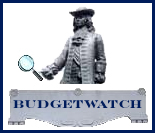- Home
- About
- News
- Tax Reform
- Ethics Reform
- Budget Reform
- Reformer’s Roundtable
- Contact Us







It’s The Size Of The Pie, Not The Prices Of The Slices, That Makes A Budget
 Philadelphia is a city with so many needs and each year our elected officials use the process of crafting a budget to decide how to dedicate our limited resources to meet these needs. In considering our civic priorities through the budget, it is imperative to define the size of the pie before it is sliced up so we can prioritize our approach to our civic needs.
Philadelphia is a city with so many needs and each year our elected officials use the process of crafting a budget to decide how to dedicate our limited resources to meet these needs. In considering our civic priorities through the budget, it is imperative to define the size of the pie before it is sliced up so we can prioritize our approach to our civic needs.
Like most years, the city’s budget deliberation this spring centered on how we should spend money above the level spent in the prior year. The Mayor wanted to increase funding for economic development and police overtime. City Council pushed for more funding for health centers and recreation centers. By the time a final compromise was reached, the Mayor and City Council agreed to fund all of the competing new priorities as well as increase funding for pensions for city employees. Where last year’s budget was crafted amidst threats of serious spending cuts, this year’s budget process was a spending spree.
When the budget for the current fiscal year was approved last summer, it projected that the city would be left with a $29 million fund balance when the city closes its books on June 30. But, over the past ten months, this fund-balance projection has increased dramatically as higher-than-projected tax revenue collections (which had been forecasted last year by Philadelphia Forward and others) materialized. The city administration’s end-of-year-fund-balance projection has grown to nearly $170 million, and analysis of the most recent available data suggests that the city could begin FY 2007 on July 1 with $200 million in the bank due to strong tax collections.
If citizens and government leaders had known during last year’s budget process that there would be another $170 million worth of pie to be divided, we might have sliced that budget up a little differently. How would last year’s debates about whether the city could afford additional tax reform, increased library spending, and other service-delivery efforts have changed if we all were trying to slice a much-larger budget “pie?”
Budgets are made up of assumptions and the process to build the assumption in the budget is crucial. In Philadelphia, the Mayor determines the revenues estimate (a sum that includes taxes, fees, funds from other governments and any surplus funds from the prior year) for the city and this estimate is the maximum amount that can be spent in a given year.
This assumption about how much money the city has to spend frames the ensuing budget discussions and represents much of the Mayor’s power in the budget process. The Mayor’s determination of the revenue estimate ultimately dictates how many of his and City Council’s priorities can be funded in the coming year. When the Mayor’s estimate of revenues is significantly below actual collections an opportunity is created for the Mayor to spend funds outside the formal budget process, avoiding the complicated give-and-take with Council during the budget process over appropriate priorities for the city.
For example, just a few years ago, the Mayor launched his “Safe Streets” program after the budget was completed and, therefore, the dozens of millions of dollars in police overtime expenditures that accompanied the program were never anticipated in budget debates or included in that year’s budget. However, because actual revenue collections were higher than those projected in the budget, the Mayor was able to return to City Council with the ability to pay the bills for his program only a few months after he had argued that the city could afford no additional spending.
It is nearly impossible to predict exactly how much revenue will be available to fund city services in the coming year, but some estimates will be better than others. While conservative budgeting is prudent, significantly underestimating revenues artificially constrains the debate over how to best allocate resources. Other cities try to improve the accuracy and transparency of estimating revenues by opening up the process to additional participants (beyond the Mayor alone) and utilizing independent, non-partisan experts to establish an estimate that is widely agreed upon as being reasonable.
As of this writing, it is likely that tax revenues for the coming year will be at least $30 million higher than currently projected in the just-completed city budget, yet we never engaged in a public debate about how to best spend these additional dollars. With more accurate revenue estimates, informed discussion about how to best divide our fund would not be artificially limited. Philadelphia’s needs and wants are limitless, but our resources are not. Understanding the size of the pie allows us to best consider the prices of the slices as we try to create the outcomes citizens want and need.
